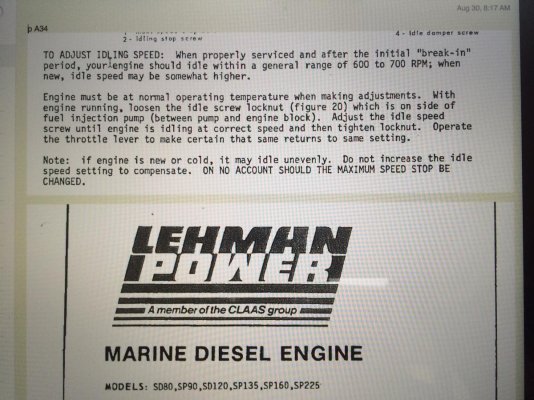Letting it lurk and fail unexpectedly is not the smart option IMO.
.
So here's a question, Eric. You run your engine (whatever make and model) up to full WOT to make sure it doesn't fail. It doesn't, so you return to whatever your normal power setting is.
But how do you know the next time you run it to WOT it won't fail?
By running it up again, right?
So you do that, but now how do you know the NEXT time you run it up to WOT it won't fail?
So, like wondering if the dial tone on your phone is really working, you chase the thing forever. Until the day comes that you go to WOT and it DOES fail.
If you really need WOT--- to outrun something or to do a prop test or whatever--- you need it. At that point, it doesn't really make any difference if the thing passed your WOT test 100 times before, it only matters that it works now, right?
So why put all that stress and heat on the engine for no reason. Use WOT only when you actually need it, and keep your fingers crossed that it doesn't fail.

I don't believe the way to know if an engine is healthy is to run it up to WOT every now and then. You're running your engine every time you take your boat out, and it's always the same engine, right?
You're an experienced guy with a feel for machinery, so you know what your engine sounds like, what it smells like, how much it smokes or doesn't smoke, how long it takes to start when it's cold and when it's warm, what temperature the coolant normally is, what its normal vibration feels like, and so on.
When something starts to go amiss, the engine will tell you. It will sound a wee bit different, or there will be a vibration that wasn't there before, or it will take longer to start, or the idle won't be quite as smooth as it normally is, or there will be more smoke than usual or it will sound a little rough at x-rpm, or whatever
It will tell you visually, too. Maybe there's some coolant seeping around the pump gaskets or there's not as much water coming out the exhaust as you think there should be, or maybe the oil will look "a little funny."
On my honeymoon back in the mid-1980s, we took a floatplane up the Inside Passage into SE Alaska and up the Stikine River into the Coast Range and the BC interior for a few weeks. On the way home, I took off from the harbor at Prince Rupert, glanced down to pull the manifold pressure and rpm back to climb power, and the tachometer was sitting on zero. The engine was running just fine, but I turned around and landed and taxied back to the seaplane base at Seal Cove.
I called Bob Munro, the founder and owner of Kenmore Air Harbor (it was his plane), told him what had happened, and asked him if he wanted me to have the Seal Cove shop replace the tach cable, which I figured was what had failed. He said, "You know what the engine sounds like at cruise power, right?" I said yes, pretty much. "Well," he said, "just fly it home on the sound of the engine and we'll fix it when you get back." So I did.
Which is a major reason why, by the way, we don't run our boat from the flying bridge. I want to hear exactly what those engines sound like under my feet and if they so much as hiccup, I want to know it.


